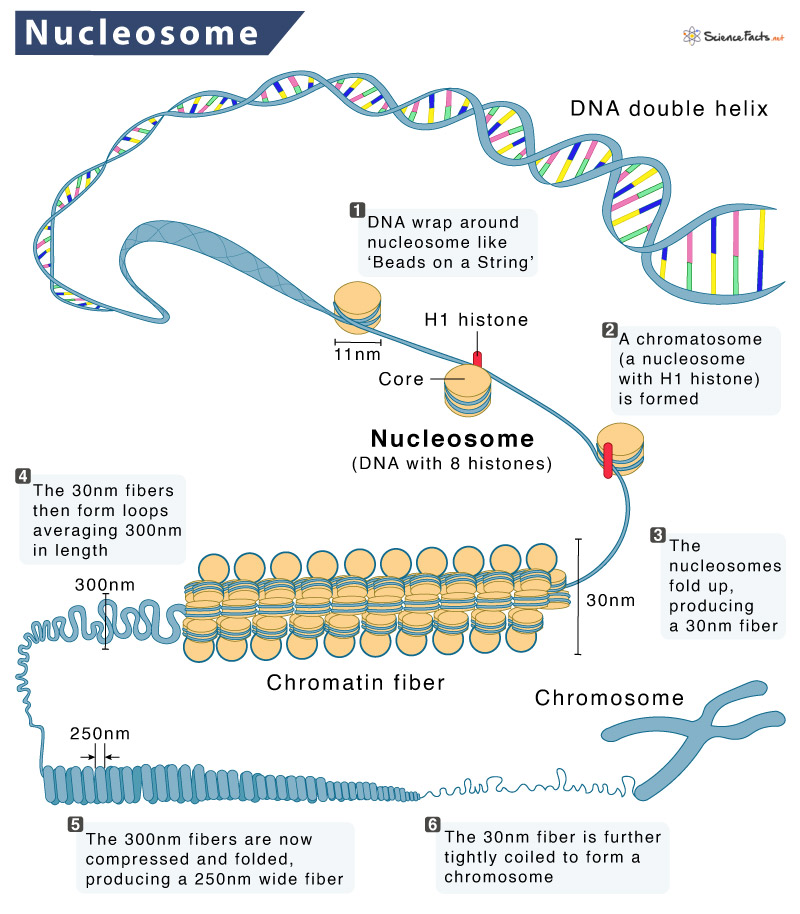The nucleosome is thus best described as the eukaryotic DNA associated with its histone proteins.
Nucleosome Structure
Nucleosome Assembly: How is DNA Packaged in a Eukaryotic Cell
Nucleosome Functions
Nucleosome vs. Chromatin
Nucleosome vs. Histone
Thus, DNA packaging in eukaryotes is achieved in three levels: First Level – Nucleosome, Second Level – Solenoid Fiber, Third Level – Chromatids, and Chromosome.
2. A Molecular Librarian
Nucleosomes are essential for protecting the delicate inner strands of DNA from any physical damage and thus are like a librarian to the cell.
3. Maintaining Cell Stability
They maintain the stability of the nucleus, keeping the DNA’s viability and associated proteins functioning correctly.
4. Allowing Access to DNA
Nucleosomes also act opposite to the function of a molecular librarian. They also must allow the information in DNA to be used by the polymerases to transcribe messenger RNA to form new proteins and replicate the DNA when the cell divides. Thus, nucleosomes act as the signaling hub inside the cell.
5. Modifying Gene Functions
Nucleosomes are also found to modify the activity of the genes they store. Each nucleosome consists of eight histone proteins tightly packed together at the center, encircled by two loops of DNA. The histone proteins have long tails which extend outward from the compact nucleosome, reaching out to neighboring nucleosomes and binding them tightly together. The regulatory enzymes in the nucleus modify these tails to weaken their interactions. In this way, the cell makes particular genes more accessible to polymerases, thus modifying their functions.
Differences
Similarities
- Found in eukaryotes
- Made up of DNA wrapped around histone proteins.
- Forms chromosomes
Similarities
Components of chromatinPresent within the nucleus of eukaryotic cellsAssociated with DNA packagingConfers genome stability
However, there are some differences.
Differences
Nucleosomes are the fundamental subunit of chromatin in the nucleus consisting of a segment of DNA wound around a core octamer of 8 histone proteins. In contrast, histones form the protein core of the nucleosome. There are five prominent families of such proteins (H1 to H5). H2A, H2B, H3, and H4 are the core histones. H1 and H5 histones are called linker histones.
